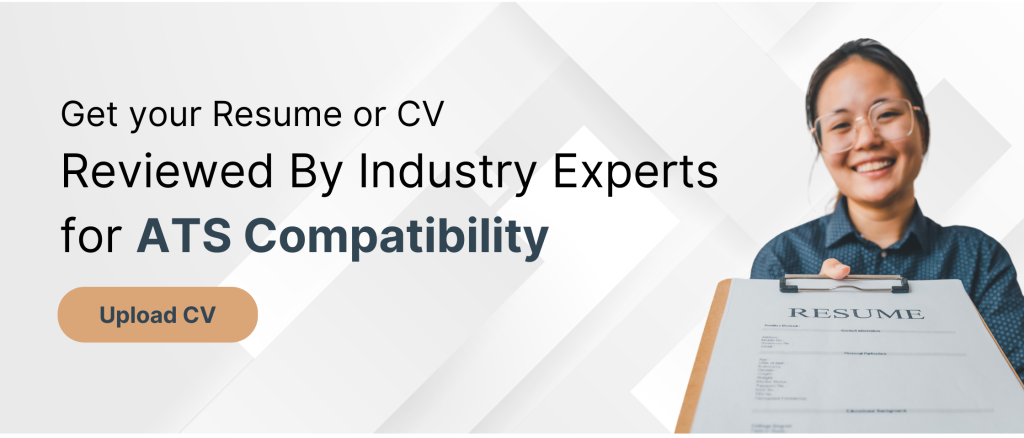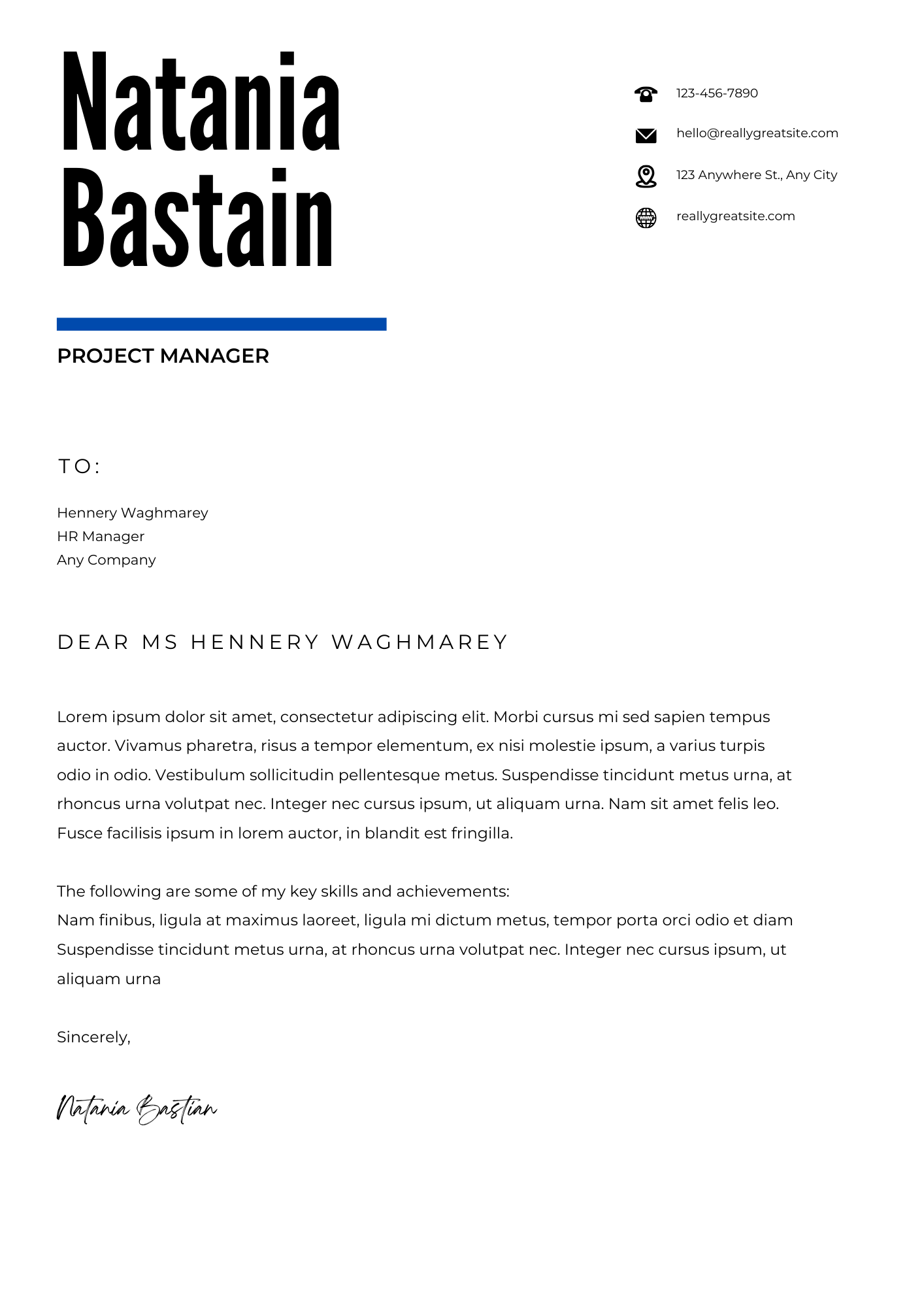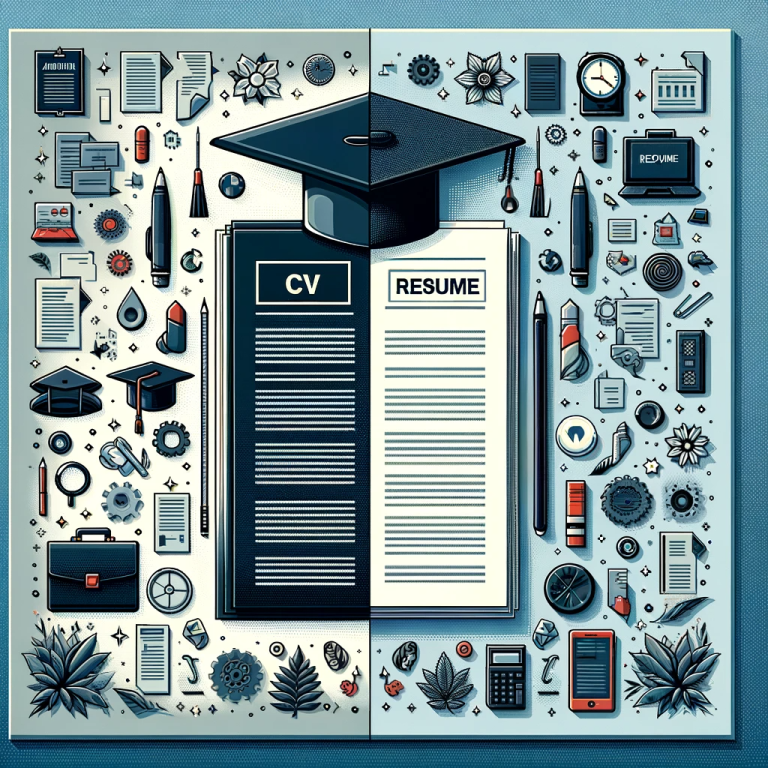Crafting a Winning Cover Letter in 2024: Strategies & Samples
Introduction to Cover Letters in 2024
As we navigate through the evolving job market of 2024, the importance of a well-crafted cover letter has never been more critical. Amidst the sea of applicants, a cover letter presents a unique opportunity to convey your personality, professionalism, and passion directly to your potential employer. This article delves into the nuances of writing an effective cover letter, ensuring you make a memorable first impression.
Outline that you will be learning in this blog
| Understanding the Purpose of a Cover Letter | – The Role of Cover Letters in Job Applications – How Cover Letters Complement Your Resume |
| Key Components of a Successful Cover Letter | – Opening Statement<br>- Body Paragraphs – Closing Paragraph |
| Personalizing Your Cover Letter | – Researching the Company – Addressing the Hiring Manager Directly |
| Crafting a Compelling Opening Statement | – Grabbing the Reader’s Attention – Introducing Yourself and Your Intentions |
| Showcasing Your Skills and Experiences | – Matching Your Skills with Job Requirements – Using Specific Examples to Demonstrate Your Abilities |
| Demonstrating Your Knowledge of the Company | – Why You Want to Work There – How You Align with the Company’s Values |
| Writing the Closing Paragraph | – Reiterating Your Interest – Call to Action |
| Formatting Your Cover Letter for 2024 | – Choosing the Right Font and Size – Cover Letter Length and Margins |
| Common Mistakes to Avoid in Cover Letters | – Overused Phrases – Focusing Too Much on Yourself |
| The Importance of Customization | – Tailoring Each Cover Letter – Avoiding Generic Templates |
| Incorporating Keywords from the Job Description | – Understanding ATS Systems – Strategies for Keyword Integration |
| The Role of Soft Skills in Your Cover Letter | – Highlighting Interpersonal and Communication Skills – Examples of Soft Skills to Include |
| Advanced Tips for Cover Letter Writing in 2024 | – Using Metrics to Quantify Achievements – The Power of Storytelling |
| Cover Letter Examples for Different Industries | – Tech Sector – Healthcare – Creative Industries |
| Utilizing Technology in Crafting Your Cover Letter | – Cover Letter Writing Tools – Online Resources for Feedback |
| Final Review and Proofreading Tips | – Ensuring Zero Typos and Grammatical Errors – Getting a Second Opinion |
| Conclusion: The Evolving Nature of Cover Letters | – Staying Ahead of Trends – Continuous Learning and Adaptation |
Understanding the Purpose of a Cover Letter
A cover letter serves as a personalized introduction to your resume, providing a narrative context to your application. It’s an essential tool that allows you to present yourself as a fully-rounded candidate, beyond the bullet points of your resume. In this comprehensive exploration, we’ll delve into the multifaceted purpose of a cover letter, underscoring its significance in the job application process and how it can elevate your candidacy in the eyes of potential employers.
Key Components of a Successful Cover Letter
Opening Statement: Your first few sentences should grab the reader’s attention, succinctly introducing who you are and what you offer.
Body Paragraphs: This section is the heart of your cover letter, where you align your qualifications with the job requirements, using concrete examples to showcase your achievements and skills.
Closing Paragraph: Here, you reiterate your interest in the role and include a call to action, suggesting a meeting or an interview.
Personalizing Your Cover Letter
Personalizing your cover letter is pivotal in making a memorable impression on potential employers. It involves tailoring the content to the specific job and company you’re applying to, showcasing how your skills, experiences, and values align with the organization’s needs and culture. A personalized cover letter speaks directly to the hiring manager, demonstrating your genuine interest and effort. Here’s how to master the art of personalization in your cover letter:

Research the Company and the Role
Start by thoroughly researching the company and the specific role you’re applying for. Understand the company’s mission, values, culture, and recent achievements. This insight allows you to tailor your cover letter by connecting your own values and experiences with what the company stands for and what the role requires.
- Company Website: Explore the “About Us” and “Careers” sections.
- Social Media and News: Check their social media profiles and recent news articles for the latest projects and achievements.
- Industry Insights: Understanding the broader industry trends can also help you align your cover letter with the company’s future direction.
Address the Hiring Manager by Name
Using the hiring manager’s name instead of generic salutations like “To Whom It May Concern” instantly makes your cover letter more personal and engaging. If the job listing doesn’t include the name, try looking on the company’s website, LinkedIn, or even calling the company’s reception to ask who the application should be addressed to.
Match Your Skills and Experiences with the Job Description
Carefully read the job description to identify the key skills and competencies required. Highlight specific experiences from your career that demonstrate you have these skills. Use concrete examples and quantify your achievements where possible to add credibility and draw direct parallels between your background and the job requirements.
Demonstrate Your Knowledge of and Interest in the Company
Show that you’ve done your homework by mentioning something specific about the company that resonates with you. This could be their culture, a project they’ve worked on, or their mission statement. Explain why this excites you and how you can contribute to their continued success.
Reflect the Company’s Tone and Language
Mirror the language and tone used by the company in their job listing, website, and social media. If they’re formal, keep your cover letter professional; if they’re more laid-back, it’s okay to be a bit more conversational (while still being professional). This shows that you understand the company’s culture and can easily fit in.
Explain Why You’re a Great Fit
Beyond just matching skills and experiences, explain why you’re particularly excited about the possibility of working for this company in this role. Share how your career goals align with the company’s direction and how you envision contributing to their team.
Closing with a Call to Action
End your cover letter by expressing your enthusiasm for the opportunity to discuss how you can contribute to the team in more detail. A proactive closing statement can encourage the hiring manager to move forward with your application.
Crafting a Compelling Opening Statement
Begin with a strong, engaging opener that introduces you and clearly states your intent to apply for the specific position. Anecdotes, when relevant, can make your introduction stand out.
Bridging Your Resume and the Job Description
At its core, a cover letter is a strategic bridge between your resume and the job description. It offers you the platform to connect your past achievements with the needs of the prospective employer. By doing so, you’re not just listing your experiences; you’re demonstrating how those experiences make you an ideal candidate for the position. This tailored narrative shows the employer that you’ve taken the time to understand what they’re looking for and have thought carefully about how your skills and experiences align with their needs.
To Read more Related Post: Click here
Highlighting Your Unique Value Proposition
Every candidate brings a unique set of skills, experiences, and personal qualities to the table. Your cover letter is your opportunity to highlight what sets you apart from other applicants. It allows you to share your story, including personal triumphs, challenges overcome, and the journey that has led you to this point in your career. By weaving these elements into your cover letter, you provide depth to your application, showcasing not just what you can do, but who you are.
Demonstrating Your Cultural Fit and Enthusiasm
Employers are not just looking for candidates with the right skill set; they’re also looking for individuals who will fit well within their team and company culture. Your cover letter is an excellent medium to express your enthusiasm for the role and the company. It’s your chance to convey why you’re not only interested in the position but also excited about the prospect of joining their organization. Discussing your alignment with the company’s values, mission, and vision demonstrates that you’ve done your homework and are genuinely interested in becoming part of their team.
Writing the Closing Paragraph
Conclude with confidence. Express your eagerness to discuss further how you can contribute to the team, and thank the reader for considering your application.
Formatting Your Cover Letter for 2024
In 2024, the job market continues to evolve, and so do the expectations for application materials, including cover letters. A well-formatted cover letter can make a significant difference in how your application is perceived by potential employers. It’s not just about the content; the presentation matters equally. Let’s delve into the key elements that make up the formatting of a standout cover letter in 2024.
To Read more Related Post: Click here
Professional and Clean Layout
The overall layout of your cover letter should be professional and clean. Choose a simple, modern font such as Arial, Calibri, or Times New Roman, and keep the font size between 10.5 to 12 points. This ensures readability across various devices and screens, an important consideration as more hiring managers review applications on-the-go.
- Margins: Standard margins of 1 inch on all sides create a balanced, tidy appearance.
- Alignment: Align your text to the left; this makes your cover letter easier to read and visually appealing.
- Whitespace: Use whitespace effectively to separate sections and paragraphs, preventing your cover letter from appearing cluttered.
Header with Contact Information
Start with a header that includes your contact information: name, phone number, email address, and LinkedIn profile (if applicable). In 2024, it’s also common to include a link to your online portfolio or professional website, if relevant to the job. Below your contact information, add the date and the employer’s contact information, mirroring the formality and professionalism of a traditional business letter.
Salutation
Directly address the hiring manager by name whenever possible. Doing so shows attention to detail and personalization. If the name isn’t available through the job listing, LinkedIn, or company website, a generic greeting like “Dear Hiring Manager” is acceptable but try to avoid overly generic salutations such as “To Whom It May Concern.”
Concise and Engaging Content
- Opening Paragraph: Begin with a strong, engaging introduction that includes the position you’re applying for and a brief mention of how you discovered the opportunity.
- Body Paragraphs: Here, link your experiences and skills directly to what the job description seeks. Limit yourself to one or two paragraphs to keep the letter concise. Use bullet points if necessary to make your achievements stand out.
- Closing Paragraph: Conclude with a strong closing statement that reiterates your interest in the position and includes a call to action, such as expressing your eagerness to discuss your application in further detail during an interview.
Signature
End your cover letter with a polite sign-off such as “Sincerely” or “Best regards,” followed by your full name. If you’re submitting a digital application, there’s no need for a handwritten signature, but ensure your typed name matches the name in your header.
File Format
When sending your cover letter electronically, save it as a PDF to preserve your formatting across all devices and platforms. Name the file professionally, using your name and the word “Cover Letter” (e.g., “Jane_Doe_Cover_Letter.pdf”).
Below is the Cover Letter format explained in written text with Visual Image :
Cover Letter Format for 2024
[Your Name]
[Your Address]
[City, State, Zip Code]
[Your Email Address]
[Your Phone Number]
[LinkedIn Profile] (Optional)
[Personal Website] (Optional)
[Date]
[Employer’s Name]
[Their Professional Title]
[Company Name]
[Company Address]
[City, State, Zip Code]
Dear [Employer’s Name],
Introduction:
Begin with a compelling opening line that grabs attention. Introduce yourself and state the position you’re applying for. Mention how you found the job listing or who referred you, if applicable. This section should be engaging and concise, setting the tone for the rest of your cover letter.
Body Paragraph 1 – Your Value and Fit for the Role:
Explain why you’re interested in the role and the company. Highlight your relevant skills and experiences that align with the job description. Use specific examples to demonstrate how you’ve successfully applied these skills in previous roles. Show that you’ve researched the company and connect your values and career aspirations with the company’s mission and goals.
Body Paragraph 2 – Demonstrate Your Knowledge and Enthusiasm:
Delve deeper into how you can contribute to the company’s objectives, drawing on your research about the company’s current projects, culture, and challenges. This is your opportunity to show that you’re not just a great fit for the role but also someone who is genuinely enthusiastic about contributing to the company’s success.
Closing Paragraph – Call to Action:
Reiterate your interest in the position and the company. State your eagerness to discuss further how you can contribute to the team in an interview. Thank the employer for considering your application. Include a polite and professional closing statement, expressing hope for future discussion.
Sincerely,
[Your Name]

Common Mistakes to Avoid in Cover Letters
Avoid clichés and generic phrases that add no value. Tailor your cover letter for each application to reflect your understanding of the job and the company.
The Importance of Customization
A one-size-fits-all approach does not work with cover letters. Each letter should be uniquely tailored to the job you’re applying for, demonstrating your interest and effort.
Incorporating Keywords from the Job Description
Many companies use Applicant Tracking Systems (ATS) to screen candidates. Including relevant keywords from the job description ensures your application makes it past these initial filters.
The Role of Soft Skills in Your Cover Letter
Beyond technical skills, emphasize how your soft skills make you a well-rounded candidate. Provide examples of how these skills have benefited your previous employers.
To read more Related Post: Click here
Advanced Tips for Cover Letter Writing in 2024
Utilize metrics to quantify your achievements where possible. Storytelling can also be a powerful technique to create a memorable cover letter, as it provides a personal touch and illustrates your professional journey.
Cover Letter Examples for Different Industries
Providing industry-specific cover letter examples can help you understand how to adapt your message for various sectors, whether it’s tech, healthcare, or the creative field.
Utilizing Technology in Crafting Your Cover Letter
Leverage cover letter writing tools and platforms for feedback to refine your letter. Technology can help you polish your application to perfection.
Final Review and Proofreading Tips
Before sending your cover letter, double-check for typos and grammatical errors. A flawless document reflects your attention to detail and professionalism.
Conclusion
As the job market continues to evolve, so does the art of writing cover letters. Staying informed about the latest trends and adapting your approach accordingly will ensure your cover letters remain effective and engaging.
FAQs About Writing Cover Letters in 2024
- How Important is Personalization in a Cover Letter?
Personalization in a cover letter is paramount. It transforms a generic application into one that feels thoughtfully tailored to the specific job and company. This level of customization shows the hiring manager that you’ve invested time in understanding the company’s needs, culture, and how your skills and experiences align with their objectives. Personalization sets you apart from other candidates who might simply submit a one-size-fits-all letter, significantly increasing your chances of making a memorable impression and advancing in the application process.
2. Can I Use a Cover Letter Template?
Using a cover letter template as a starting point is acceptable, but it’s crucial to customize it thoroughly for each job application. Templates can provide a good structure and ensure you include all necessary elements, such as an introduction, body paragraphs, and a closing. However, to avoid a cookie-cutter appearance, you should adapt the language, examples, and emphasis based on the job you’re applying for and your unique experiences and qualifications.
3. How Do I Address Employment Gaps in My Cover Letter?
Addressing employment gaps in your cover letter can be done positively and constructively. Instead of focusing on the gap itself, highlight what you learned or how you grew during that time. Whether you took time off for personal development, to care for a family member, or to pursue education, explain how these experiences have equipped you with unique skills or perspectives that benefit the role you’re applying for. Addressing gaps directly and confidently can help mitigate any concerns from the employer’s side.
To read more: click here
4. What’s the Best Way to End a Cover Letter?
The best way to end a cover letter is with a strong, confident, and polite call to action. Express your enthusiasm for the opportunity to discuss how you can contribute to the company further in an interview. Thank the hiring manager for considering your application and mention that you look forward to the possibility of contributing to their team. This reaffirms your interest in the position and encourages the hiring manager to take the next step.
5. Should I Include a Cover Letter Even if It’s Not Required?
Yes, you should include a cover letter even if it’s not required. A cover letter provides you with an opportunity to explain your interest in the company and the position, highlight your most relevant skills and experiences, and demonstrate your writing and communication skills. It shows initiative and a genuine interest in the role, which can favorably distinguish you from other applicants who only submit a resume.
6. How Can I Make My Cover Letter Stand Out?
To make your cover letter stand out, focus on personalization, specificity, and storytelling. Tailor your letter to each job by mentioning specific aspects of the company and role that excite you and matching your skills and experiences to their needs. Use concise, compelling stories from your career to illustrate your achievements and the impact you’ve made. Employ a confident, professional tone and be sure to proofread carefully to avoid any errors. Additionally, a creative opening and a strong closing can leave a lasting impression on the hiring manager.
🔴Do you have an ATS (Automatic tracking system) Compliant CV?
🔴Do you have a CV which is globally acceptable?
🔴Do you have professional content in your CV?
✅Get your CV designed and developed today !! Professionally .
Get your Resume reviewed for free by industry experts: Click



![How to explain gaps in employment [with examples]](https://prosumely.com/wp-content/uploads/2024/02/DALL·E-2024-02-09-00.41.35-Create-an-inspiring-cover-image-for-a-blog-post-titled-How-to-Explain-Gaps-in-Employment-in-Interviews.-The-image-should-feature-a-confident-individ-768x768.webp)


![Best format for resume writing [with examples]](https://prosumely.com/wp-content/uploads/2024/02/DALL·E-2024-02-08-23.27.07-A-visually-captivating-and-professional-image-showcasing-a-person-holding-an-open-resume-with-visible-sections-for-work-experience-skills-and-educat-768x768.webp)